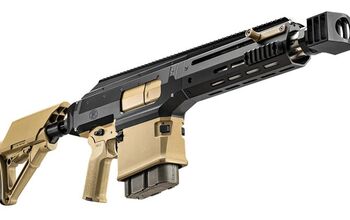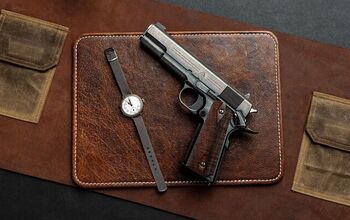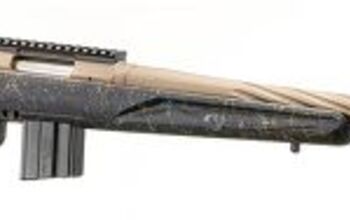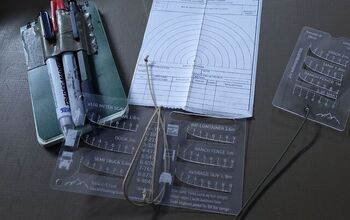The M79 - From US Innovation and Modifications to Vietnam's Imitation

When the M79 reached U.S. troops in the early 1960s, it looked like someone had shortened a shotgun and given it an artillery round, a compact, single-shot, break-open launcher that fired a low-velocity 40x46mm grenade. It gave small units a new kind of miniature artillery: explosive power far beyond a thrown hand grenade but without the logistics and crew required for a mortar. That blend of portability, punch, and simplicity made the M79 one of the Vietnam War’s iconic small arms, and it invited modifications in the field. Special operators in MACV-SOG and other units modified by shortening the barrel for specific roles, while post-war Vietnam even produced a locally made variant.
Project Niblick
The M79’s story begins in the 1950s with Project Niblick, an Army effort to give the individual soldier an intermediate explosive capability, more than a hand grenade, less than a mortar. Springfield Armory experimented with several launcher concepts. Multi-shot mechanisms proved mechanically troublesome and heavy; ultimately, a simple single-shot, break-action arrangement emerged as the most reliable and manufacturable option. That design evolved through experimental models S-3, later refined into the S-5, which became the XM79 and was adopted as the M79 in 1960. Its 40x46mm low-velocity cartridge used a high/low pressure system that kept recoil manageable while allowing a comparatively potent warhead that could be fired safely from the shoulder.
The Gun
On patrol in Vietnam, in tangled jungle, across flooded paddies and among fragmented hamlets, the M79’s strengths were plain. Its practical direct-fire reach of a few hundred meters let small patrols engage enemy positions hidden by foliage or earthworks, situations where rifles and machine guns often struggled. The launcher accepted a broad range of 40mm ammunition: high-explosive fragmentation for anti-personnel work, smoke and illumination for marking and night operations, buckshot and flechette types for very close targets, and various non-lethal CS grenades. In many squads, a grenadier carrying an M79 was effectively an organic fire team's miniturre artillery piece, able to change the fight with a few, well-placed shots.
Those advantages carried tradeoffs. The single-shot action meant a low sustained rate of fire, and many 40mm rounds required a minimum arming distance that limited use at extreme close quarters, though at close range, it acts as a slug. A dedicated grenadier for the big Army typically could not also carry a full-size service rifle; instead, he was armed with an M1911, leaving him vulnerable. Those limitations would push later developments, notably under-barrel systems such as the XM148 and the more successful XM203, which allowed a rifleman to retain his primary weapon while gaining grenade capability.
Field Improvements
The M79 demonstrates the tension between design and mission in its field modifications. MACV-SOG, the clandestine cross-border special operations organization, operated in terrain and on missions that conventional units rarely attempted. Reconnaissance and direct-action raids behind enemy lines demanded compactness and the ability to improvise. SOG teams adapted the M79 to those needs.
Veterans’ accounts and photos describe M79s shortened at the barrel and sometimes the stock so that the launcher could be carried in a holster, on a belt, or slung conveniently alongside a compact rifle. These were not standardized armorer conversions so much as mission-driven alterations: remove length where it hindered mobility, modify slings and pouches for 40mm rounds, and pair the shorty M79 with an XM177E1/E2 as the operator's primary weapon. The result was a highly portable package that traded a measure of range and muzzle velocity for concealability and immediate firepower.
The chopped-down M79s were a tool tailored to the special operations battlefield realities. Shortened barrels reduced ballistics performance, less velocity, and shorter effective range. Still, in thick jungle or during surprise ambushes, that loss mattered less than the ability to deliver a devastating point-blank round. The cut-down M79 was also lighter, allowing operators to carry more ammunition or ancillary equipment. A major reason for the reduction in weight was that it had to be carried alongside the operator’s primary weapon.
Late war solutions
Other specialized groups pursued different answers. Navy SEALs and some Green Beret detachments experimented with multi-shot options; the China Lake pump-action launcher developed by naval operators is a notable example, while the later XM148 and XM203 under-barrel system solved the rifle/launcher tradeoff for conventional infantry. Yet for missions demanding accurate, stand-alone fire and a longer, dedicated sighting platform, the M79 persisted with special units and niche applications long after under-barrel launchers became widespread.
Vietnam local production
After the war, the M79’s simple, robust design made it a logical candidate for local manufacture as Vietnam inherited a lot of M79s. Though aging, new production was set up at Vietnam’s Factory Z125 produced a version known as the M79-VN that featured a red synthetic stock and the option of optical sights. Local adoption reflected more than nostalgia: the M79-VN was easy to build, maintain, and feed with readily available 40mm ammunition, and it continued to serve in training, base defense, and internal security roles. That home-grown copy is a concrete example of how an American small arm, born from mid-century experimentation, became part of the region’s post-war firearms landscape.
Enduring image and lessons
The M79 endures because it solved a clear tactical problem with a compact, reliable solution. Its legacy is both technical and cultural. Technically, it taught hard lessons about weapon-system tradeoffs: rate of fire versus range and explosive power; the operational value of integrating rifle and grenade capability into a single platform; and the limits of single-role specialty weapons in a fast-moving battlefield. Operationally, it showcased how small teams improvise to meet mission profiles, from SOG’s cut-down M79s to Navy experimentation proving that user innovation can be as influential as factory design. Today, we are also seeing a bit of a shift back to standalone grenade launchers by end users.
Perhaps the most lasting idea the M79 proved is simple: simplicity paired with flexible ammunition options can be the ultimate force multiplier in small-unit warfare. A single reliable launcher that a grenadier can put the right munition for the moment often does more for a patrol than a heavier, more complex system. That is why an icon of the 1950s still refuses to fade, finding relevance in the hands of operators and a place in U.S. Special Operations inventories even now.

Lynndon Schooler is an open-source weapons intelligence professional with a background as an infantryman in the US Army. His experience includes working as a gunsmith and production manager in firearm manufacturing, as well as serving as an armorer, consultant, and instructor in nonstandard weapons. His articles have been published in Small Arms Review and the Small Arms Defence Journal. https://www.instagram.com/lynndons
More by Lynndon Schooler

























Comments
Join the conversation
I'm surprised that there is no mention of it's nickname. Some called it the blooker and others called it the blooper, but both were based on the "blook!" noise it made when fired.
The M79 proves a good weapons even if it has limitations never really goes away
completerly, but here we are in a new tech age and whats the new menace
"drones" whether they be for recon only oir armed with bombs, a menace is
still a menace, so lets revive the Blooper with a M4 stock, mounts for telescopic
or a laser aiming system and dseploy as a dirt cheap to manufacture and supply
ammo for anti drone weapon .